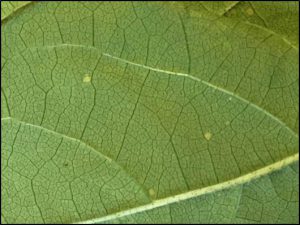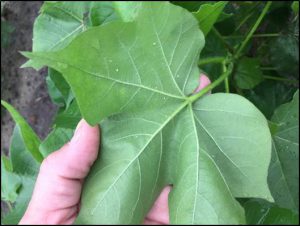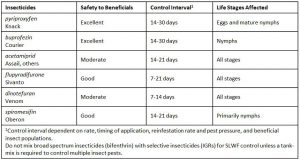
Silver leaf whiteflies (SLWF) are steadily increasing in cotton fields in our area. Having SLWF isn’t a new problem, but it is one that we don’t deal with every year in our area. Adult whiteflies were observed in some cotton fields as early as June in Southwest GA. Dr. Phil Roberts said then that whiteflies are about a month early which is an indication of a rough year. SLWF populations in cotton started climbing by mid July in and around our county. The mild winter we had is to blame for the problem.
Damage from SLWF ranges from reduced plant growth and vigor, general leaf decline, and premature defoliation. SLWF also causes honeydew deposits on leaves and open cotton. The honeydew accumulation on lint will negatively impact quality. Yield reductions can be serious if left untreated.
Hot dry conditions are conducive for SLWF population growth. The frequent rainy and cloudy weather conditions have likely caused the population growth to slow down. However, it is critically important that initial insecticide applications are well timed. Control will be very difficult and expensive if the initial application is late. It is nearly impossible to regain control once the population reaches outbreak proportions.
SLWF adults (solid white wings) and immatures will be found on the underside of leaves. Populations are best estimated from the 5th main stem leaf below the terminal. Main stem leaves are attached directly to the main stem by their petioles. The top or first main stem leaf is defined as the uppermost leaf which is 1 inch or larger in diameter. Adults and nymphs should be counted on the 5th main stem leaf below the terminal.



Steps for Efficient Sampling of Whiteflies
1. Familiarize yourself with the general location of the 5th main stem leaf in each field.
2. Select plants at random at least 25 paces into the field and at least 10 paces apart, being careful to keep your shadow from passing over the plant you plan to sample.
3. Turn the 5th leaf over slowly by its tip or petiole and count the leaf as infested with adults if it has 3 or more adults on it. Include in your counts any adults that fly up from the leaf as you turn it over.
4. Detach the leaf by the petiole from the main stem. If it fails to snap off easily, you have likely sampled a leaf that is too high on the plant. Recheck your leaf position to make sure you are sampling the 5th leaf.
5. Examine the bottom of the leaf for the presence of immature SLWFs. Count the leaf as infested if it has 5 or more immatures on the underside of the leaf. Sample at least 30 plants (leaves) per field.
6. Calculate the percentage of leaves infested with adults and the percentage of leaves infested with immatures.
7. Treatment is recommended when 50 percent of sampled leaves are infested with immature SLWFs.

If you need any help looking at a field give me a call. There’s also a printable guide available on scouting for SLWF. If you would like one of the guides let me know.
Contributors: Dr. Philip Roberts, UGA Cotton Entomologist